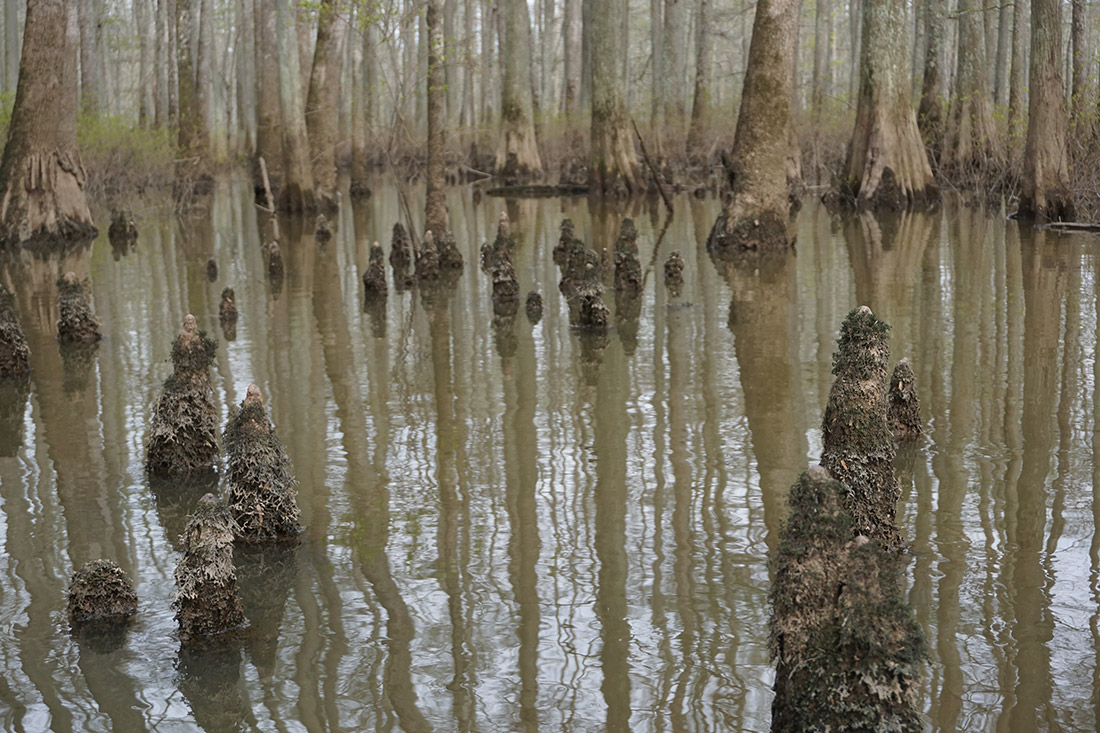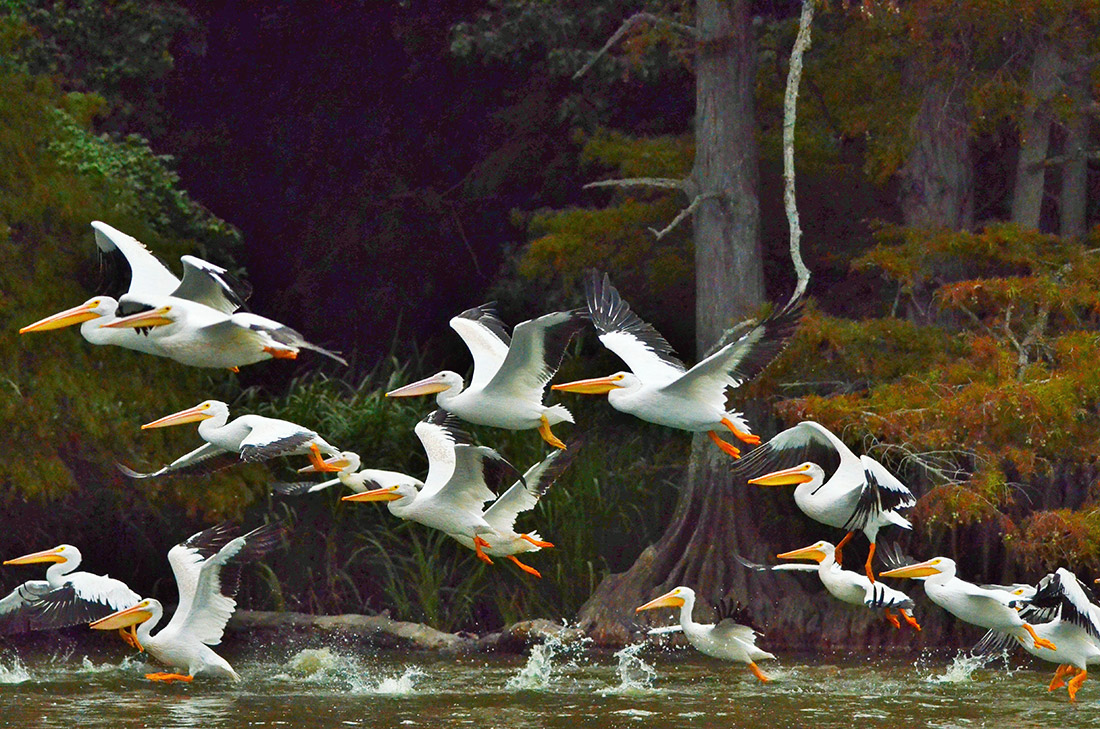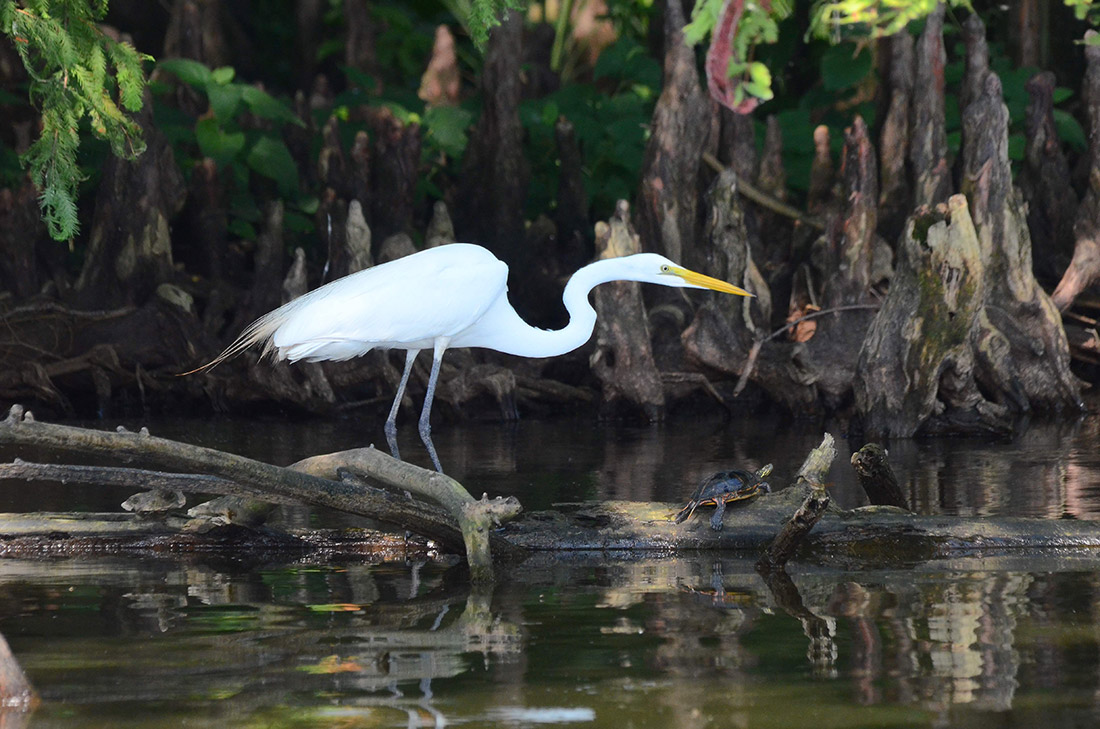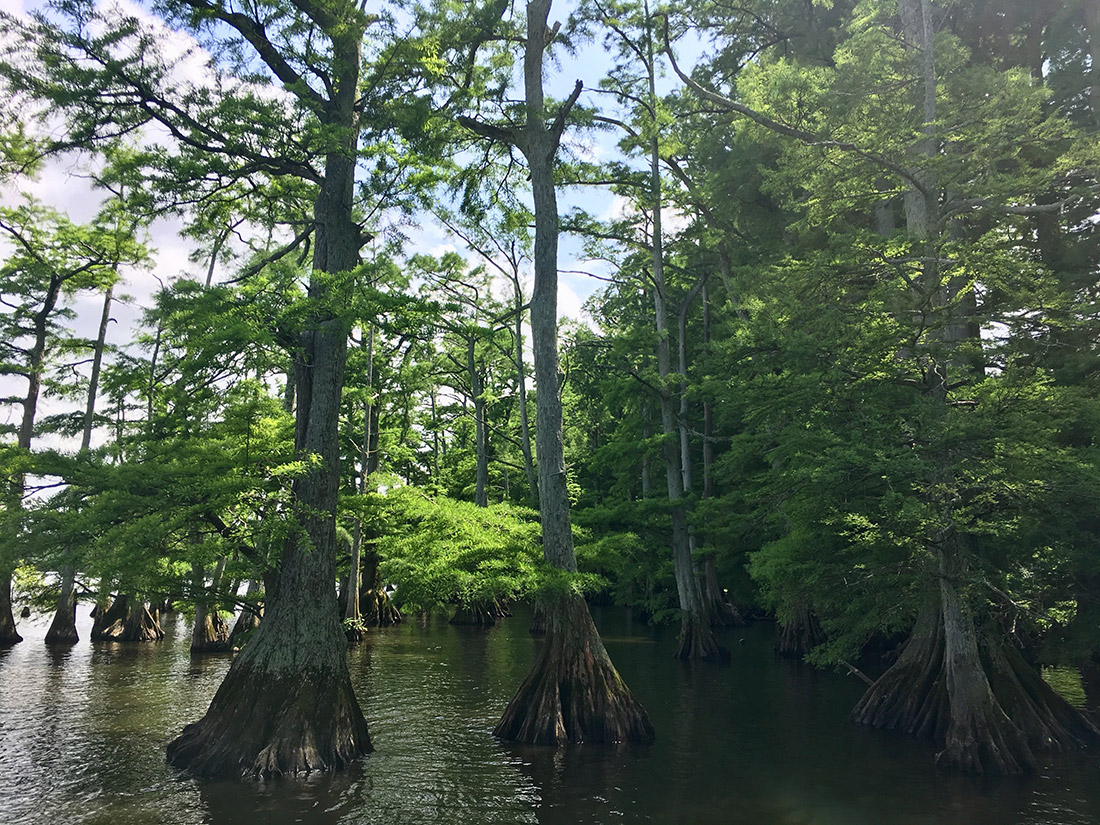Navigating the swampy waters of western Tennessee
By Jessica Dixon
MARK BABB, owner of Ghost River Outfitters, hoists my kayak up the muddy bank, avoiding the exposed roots of a downed tree. I stand up and steady myself on a branch as he pulls the kayak around the tangle of roots and back into the Wolf River, a Mississippi tributary, completing the portage with routine ease. A native Memphian, he has paddled this river all his life.
Babb and a friend, both fire- fighters, founded Ghost River Outfitters in 2004. For years, they’d get off work at the fire department and spend a day on the river, often venturing into their favorite part of the Wolf: The Ghost River Section. Friends kept asking to join, so they’d buy another boat.
“Word just got out,” Babb says. “People would call, and if we were available, we’d drive up.”

Ghost River Outfitters still operates by word-of-mouth, now run mostly by Babb and his son, attracting people like me who crave wild spaces. The Ghost River Section, a nearly nine-mile stretch of river from LaGrange to Moscow, Tenn., spans five ecosystems, and my excitement grows with each bend in the river. Yager Bridge — the put-in point in LaGrange — spans an upland forest populated by oak, hickory and ash.
The Ghost River Section is not a journey for novice paddlers. Locals have traversed this stretch of the Wolf for generations, but in the 1990s, Wolf River Conservancy members installed trail markers to help adventurers who suddenly find themselves in a river turned swamp.
It is a Tuesday, and we are alone on the river. The outfitters here are family-owned, and they share a sense of responsibility for this pristine part of the river, which escaped channelization.
“A lot of paddling has a reputation for partying, but we cater to more experienced paddlers who respect and appreciate nature,” Babb says.
The cypress swamp itself has remained untouched, but other parts of the river did not escape human impact.
“I could tell you,” Babb says, “as soon as 20 years ago, it was not uncommon for me to pass people on the bridges with their pickup trucks full of trash, throwing it into the river and waving because they didn’t think anything of it. You don’t see that anymore. This effort to clean up the river and let it restore itself has changed a lot of people’s attitudes.”
So far, there’s no need for strict regulations or enforcement — the Conservancy, outfitters and local geocachers and canoe clubs treat this other- worldly place like a beloved community elder, worthy of respect and some help with yard work.
“My fear is one day we may lose that and have to come up with regulation that can be enforced to protect it, because it’s too easy to damage,” Babb says.

To help me understand the ecosystem, Babb has invited along Jim Gafford, a white-bearded river guide with the Conservancy, which has been protecting this area since the mid-1980s, saving it from a logging attempt in 1995.
I ask how Gafford became involved with the Conservancy, and he brushes aside the esteem woven into my question.
“I had always been active in volunteering and paddling,” Gafford says. “So, in 2011, when I saw an advertisement for river guides with the Wolf River Conservancy — and they enticed me with beer and pizza — I just showed up, and I have not regretted it.”
Gafford paddles his one-person canoe ahead of me, drifting just past earshot and waiting for me to catch up, telling me about this land he so clearly loves. He points out Virginia sweetspire due to bloom later this year, motions to an old maple with its rose- colored seed pods hanging like a delicate chandelier above our heads, and I sense he would be equally happy greeting these familiar friends alone. He is utterly self-sufficient in his conversation with the river, and I am lucky to listen.
After a granola bar pit-stop around mile four or five, the river banks start to drop, urging flood waters to overflow their channel and saturate the wooded land on either side. Here, in the bottomland or wetland forest, we begin to see water-loving species like American hornbeam, catalpa, sycamores, river birches and the tree I’ve traveled to see: bald cypress.
The first cypress trees, with their knobby knees poking above the water’s surface, thrill me, hinting at what is to come. The river’s left bank begins to fall away, and chutes extend into the forest.
“If you pick the wrong chute,” Gafford says, “that eventually gets to dry land, and you won’t have a way out. The river just kind of disappears unless you hit the right areas.”
Only one of those channels will lead us where we want to go: the cypress swamp.

“I grew up in Memphis,” Babb says, “and just like most Memphians, what we used to take for granted — you could just drive out in the country and camp and enjoy nature — became less and less available. Now, we just have tiny pieces where we can do that.”
We continue paddling toward what looks like a dead end surrounded by tall grasses. A small, hand-painted sign instructs us to “Turn Here.” We do, entering the swamp with hushed voices, hearing only the lapping against our boats, our paddles breaking the water’s surface.
Tall grasses and spatterdock open into a vast, disorienting maze of bald cypress trees, their knees bumping the sides of my kayak as I steer around wide trunks and thin branches just starting to push their needles. With innumerable channels and the eerie cypress silhouettes, I understand how the Ghost River Section earned its name. These bald cypress and water tupelo are likely hundreds of years old; their bases fan out near the water’s surface, several feet lower than the high-water mark indicated on their trunks.
A blue heron navigates the sky more grace- fully than I steer my kayak, landing in the swamp with us, just out of sight. I ask what wildlife Babb and Gafford usually see along the river: herons, fish, turtles, otter, water snakes. Sometimes a deer. The bald eagles are coming back.
After about half an hour of tricky paddling, we emerge into Spirit Lake, a still expanse surrounded by cypress and tupelo casting stark reflections on the water. With no current to help us along, I start to find the edge of comfort, laying my paddle across my lap to rest my wrists. By the far side of the lake, I am grateful for the swiftest current yet, funneling the water into a channel once more, flanked by grassy banks and signs of civilization.
Moscow’s Bateman Bridge marks the end of our trip, but my journey continues.

The next day, I drive from Memphis to Reelfoot Lake, two hours northeast of the city. Reelfoot Lake formed when earthquakes in 1811-12 caused the Mississippi River to flow backwards, flooding a bottomland cypress forest. Though it has 14,000 acres of boatable water, the lake is shallow — only five feet deep — and covers remnants of a sunken forest dotted with ancient Native American ceremonial mounds.
The lake’s shoreline is rimmed by trees; some of the big pre-quake trees are 300-500 years old. A handful of cypress stand in the lake, gnarled and stunted, still alive but no bigger than they were in 1812.
Much of the Mississippi River floodplain was turned into farmland, so Reelfoot Lake provides a portal to the days before development. Most of the land around the lake is a wildlife refuge; 244 acres are state park land. Ranger Jerry Hall drives me around the lake in a small pontoon boat — the Atlantian forest of tree stumps beneath the surface precludes speed boats and jet skis.
Before we set out on the pontoon, Hall received a call about a wounded bald eagle. With around 35 active nests, they often field such calls.

“How do you catch a bald eagle?” I ask.
Hall pauses, his expression wry: “We got big thick gloves and a little bit of courage.”
We approach one of the surviving trees in the lake, bearing a large osprey nest. As we slowly motor by, Hall relying on decades of experience died, but the potential long-term effects are unclear, so the Rangers and the community are watching closely, working to do right by the trees.
The oldest of these were vibrant saplings, needles growing in the sun, long before this land would be called Tennessee. I imagine they know these plainspoken men are part of a community of locals who love the land. Who quietly do their work to protect these places — sometimes paid and some- times not — asking only for people to get on the water, out amongst the trees, and marvel. It is an easy thing to do.
Jessica Dixon is a writer and curious soul living in Denver.

